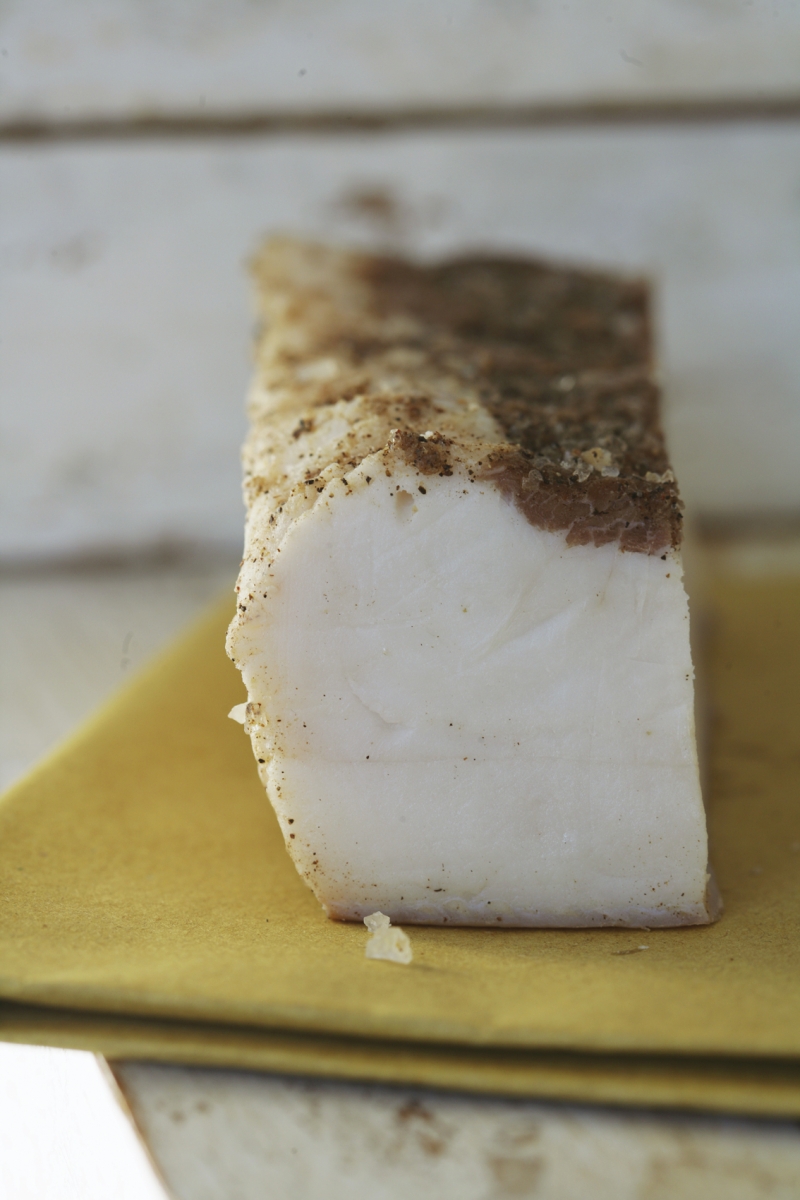Thanks to the recent influx of high-end Italian restaurants, more Edmontonians are discovering the charms of lardo: King of animal fat.
Pass the back (fat)
Lardo is the cured and dried back fat from a pig (it’s not the same as regular lard). The spices used to make traditional lardo are sea salt, ground black peppercorns, fresh rosemary and chopped garlic. It is aged for six months to two years and then sold in pure white slabs, often with a rind of herbs and spices.
From Tuscany to Iberico
Lardo originally hails from northern Tuscany and lardo di Colonnata is possibly the most sought-after type. Colonnata is famous for its marble mines and lardo di Colonnata is made by layering pig fat with salt and spices in large marble bins. Daniel Costa has served this type of lardo in his three restaurants – Corso 32, Bar Bricco and Uccellino – though not all the time, as it’s difficult to source. He commonly uses lardo Iberico de Bellota from Spain, which the Italian Centre deli also stocks regularly. The Spanish would argue it’s just as good as the Italian stuff.
Pure pork
Lardo is a type of salumi, or Italian prepared meats, which are mainly pork-based and often served as antipasti. Slices of lardo are commonly served on warm crostini, or it can be whipped and then spread over bread like butter. “It’s silky; it just melts in your mouth,” Costa says. “When you have really good lardo, it should never be overly salty. It should just kind of have a nice balanced salt with the subtle essence of porkiness, I guess. It’s probably the best kind of way to simply taste the pig.”
Local lardo
Lardo can be made from any pig with a thick enough layer of back fat (at least three inches). Rosario Caputo of Cibo Bistro has started curing his own lardo using the Mangalitsa pigs from local Alberta farm, Country Accent Heritage Breeds. “We started using the Mangalitsa pig, because the way you breed the pig, it has a fattier diet so it does get that three-inch cap,” he explains. “Whereas in regular Alberta pork, they breed them quite a bit leaner and it’s like half an inch to an inch of fat.”
